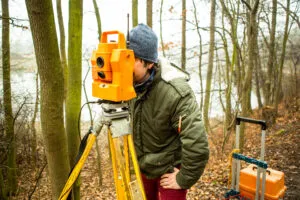The Satellite Network
GPS operates through a constellation of satellites that are strategically positioned in medium Earth orbit. This network includes at least 24 operational satellites at all times, ensuring global coverage and providing users with precise navigation and timing services 1. Each satellite orbits the Earth approximately twice a day at an altitude of about 20,200 kilometers, which allows for a wide field of vision and the ability to cover a large portion of the Earth’s surface 1.
The satellites are not only equipped with solar panels to harness energy from the Sun but also have onboard batteries to remain operational during eclipses when the Earth blocks sunlight 1. Importantly, each satellite carries highly accurate atomic clocks, which are crucial for the synchronization needed in GPS technology. The precision of these clocks ensures that even minor discrepancies in time are accounted for, which is vital for accurate position calculations 1.
Signal Transmission
GPS satellites transmit signals that are crucial for determining a user’s exact location on Earth. These signals, which travel at the speed of light, include detailed information about the satellite’s position and the exact time the signals are sent 2. This information is encoded into a microwave signal that is picked up by GPS receivers. The process involves measuring the time it takes for these signals to travel from the satellite to the receiver, which is then used to calculate the distance between them 2.
To avoid interference and ensure clarity, GPS signals are transmitted on the L-Band frequency. This frequency range is specifically chosen because it can penetrate clouds, fog, rain, storms, and vegetation with minimal disruption 3. Additionally, the signals are modulated using techniques like the Gold Code and Binary Phase Shift Keying (BPSK) to differentiate between signals from different satellites on the same frequency 4.
For a GPS receiver to accurately determine its position, it must receive signals from at least four satellites. This method, known as trilateration, involves the intersection of at least three spherical signals to pinpoint an exact location [1](https://www.geotab.com/blog/what-is-gps/). The addition of a fourth satellite signal helps to correct any timing errors due to the slight differences in clock speeds caused by the theory of relativity, where time is affected by gravity 3.
In summary, the operation of GPS satellites involves a complex interplay of high-tech systems and precise timing to provide essential positioning and navigation services globally. The continuous monitoring and adjustment by ground-based control stations ensure that the system remains accurate and reliable 1.
FAQs
1. How does GPS function from a scientific perspective? GPS operates through a network of satellites that emit continuous radio signals. GPS receivers, such as those in smartphones, are programmed to detect the position of these satellites at any given time. By measuring the time delay between the signal being sent and received, the GPS device can determine its location by calculating its distance from at least four satellites.
2. Can you explain the step-by-step process of how GPS works? GPS involves a constellation of over 30 satellites orbiting the Earth, which are known to constantly transmit signals. A GPS receiver, like the one in your mobile device, picks up these signals. By determining the distance from four or more of these satellites, the receiver can pinpoint your exact location on the globe.
3. What are the physics principles that enable GPS to function? The functioning of GPS is based on the physics of microwave signals emitted by satellites. These microwaves, which travel at the speed of light, are sent at a specific time and reach the GPS receiver after a known interval. By calculating the time it takes for these signals to reach the receiver, the device can compute the distance to each satellite.
4. What theoretical principle underlies GPS technology? The core theory behind GPS is triangulation. This method involves the GPS receiver measuring the exact time it takes for a signal from a satellite to reach it, which is typically less than a tenth of a second. Using this measurement, the receiver can use the concept of triangulation to accurately determine its position on Earth.
References
[1] – https://www.linkedin.com/pulse/understanding-basics-gps-curtis-arnold-1x8rc
[2] – https://landairsea.com/blog/how-gps-tracking-works/
[3] – https://hikingguy.com/how-to-hike/how-does-gps-work-gps-for-dummies/
[4] – https://en.wikipedia.org/wiki/GPS_signals
[5] – https://www.geotab.com/blog/what-is-gps/


